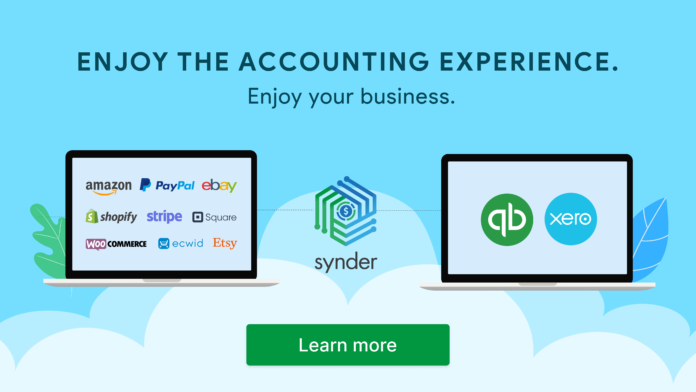Reconciliation is an important accounting process that all businesses should understand and carry out. Luckily, it no longer needs to be difficult or challenging. Learn about what accounts reconciliation is, why it’s so important, and an easy and effective way to reconcile business transactions.
Contents:
- What is reconciliation
- Why you should reconcile your accounts
- How to reconcile your accounts easily
What is reconciliation?
Reconciliation compares a business’s financial records with its actual bank balance to ensure that the figures are fully balanced and match up. There are different types of reconciliation, but ultimately the process rectifies discrepancies between any two sets of records. It serves as a way to make sure that accounting records are fully complete and accurate and that all debits match credits. Businesses can reconcile their records daily, monthly, quarterly, or annually, depending on their size and specific needs.
In the past, account reconciliation used to be a manual process using spreadsheets or pen and paper. It was time-consuming and difficult to deal with piles of paper records and receipts. However, today, cloud accounting software has made the process more simple, efficient, and cost-effective.
Why you should reconcile your accounts
The main reasons to reconcile your accounts are; to ensure the accuracy and validity of your business’s financial information, and to gain a clear overview of your finances in general.
When you reconcile financial data you can find any discrepancies or unauthorized changes that might have occurred during the reporting period. This allows you to take action to correct these identified discrepancies. Here are some examples of why reconciliation plays an important role in running a business:
- Tackle fraudulent activity:
Many criminals prey on business accounts, as these types of accounts typically store large amounts of cash and an unknown transaction can go easily unnoticed. These fraudulent charges can be anything from a subscription you didn’t purchase to large sums of money being withdrawn without your approval. A routine of regularly checking your bank statements highlights any abnormalities, allowing you to act in time.
- Be prepared for tax audits and tax filing:
During a tax audit, businesses will have their financial information examined to see if the information they provided was correct. Regular balance sheet reconciliations will reduce the risk of an audit in the first place and also ensure that if you are audited that your records will be error-free. This can help you avoid fines from the IRS. Correct financial statements are also a key way to prepare for tax filing. By keeping your accounts reconciled you can easily prepare the financial statements you need, saving you enormous amounts of last-minute tax induced stress.
- Clear overview of finances:
For business owners (especially small business owners) it is important to be aware of their exact cash flow position. Reconciling their accounts helps them to catch any math errors and get a clear picture of their state of affairs. It provides owners with a better understanding of how much cash they actually have, because they know how much is owed to them. Knowing the exact financial situation of a business helps business owners when they make financial decisions and can prevent them from overspending money that they do not have.
- Secure investments:
Investors and lenders inspect a business’s financial statements when deciding whether to invest in a business. When a business is looking to secure external debt and equity investments they will need to show accurate and reconciled records.
How to reconcile your accounts easily
Step 1: Connect bank accounts and credit cards to an accounting software
Many businesses use online accounting software, such as Quickbooks or Xero, because it simplifies the process of record keeping.
Connect your bank accounts to your accounting software of choice to get a regularly updated live picture of your current account balance.
Step 2: Connect your online sales channels to your accounting software
As well as receiving physical credit card payments and cash payments, many businesses also sell online. These online transactions involve other payment channels such as PayPal and Shopify. It’s important to also maintain records of these online transactions. So the next step is to connect these online sales channels to your accounting software as well.
Unfortunately, most accounting software aren’t integrated with every payment channel you might be using. To solve this problem, you can use another software called Synder, which easily connects all of your e-commerce channels to your accounting software.
Step 3: Synchronize the data
Once your bank accounts and payment channels are all connected to your accounting software, the system can start to synchronize this data into your accounting records. The data can be synchronized completely automatically and in real-time with ongoing transactions. Synder can also import transactions going far back in time (historical data) without any limits.
Step 4: Start reconciling
Now you can start to reconcile! Simply match your bank and online transactions with your bookwork. The accounting software will suggest the matches and categories for you and all you need to do is confirm them, thereby reconciling the data. For example, the software can match bank transactions to bill payments, receipts, or invoices. Review the matches and reconcile them in just a click.
Transactions that don’t match will be brought to your attention and you will be able to identify whether there was a possible bank error, delayed payment, outstanding check, or possible fraud.
That’s all! By connecting your bank accounts and payment platforms to your accounting software and the cloud, you take care of the process of importing data accurately. This is a huge advantage to manual data entry which can often result in human errors. This way, all that remains for you to do is review matches, allowing you to stay in full control of your finances.
To start this simple reconciliation process, Synder offers a free trial and 24/7 customer support if you need any guidance or have any questions.
Find a Home-Based Business to Start-Up >>> Hundreds of Business Listings.

















































